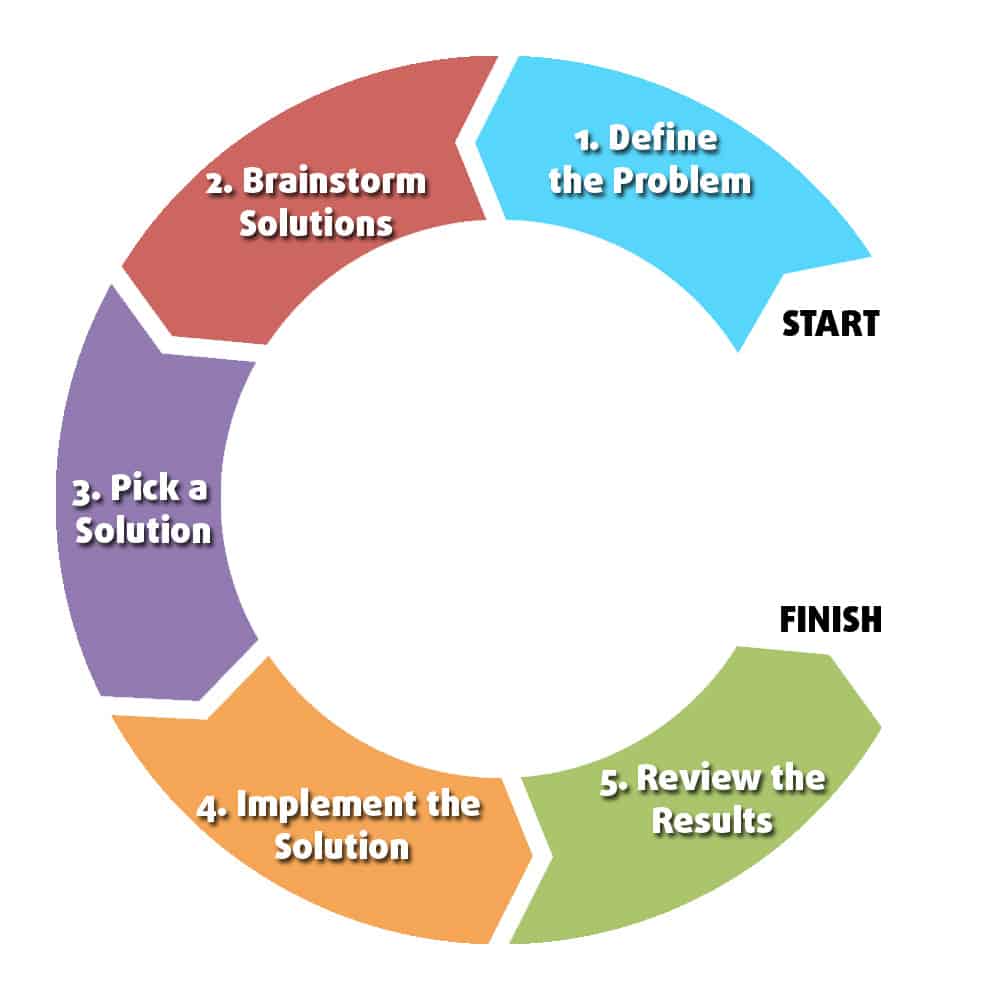Problem solving
5 steps of problem solving
1. Define the problem
To solve a problem, you must find out what caused it. This requires you to gather and evaluate data, isolate possible contributing circumstances, and pinpoint what needs to be addressed for a resolution. In addition to getting clear on what the problem is, defining the problem also establishes a goal for what you want to achieve.
2. Generate interventions
Once you’ve determined the cause, brainstorm possible solutions. Sometimes this involves teamwork since two (or more) minds are often better than one. The goal is to create a list of possible solutions to choose from. The harder the problem, the more solutions you may need.
3. Evaluate solutions
Evaluation of best solutions may be performed by assigned teams, team leads, or forwarded to corporate decision-makers. The ideal solution is effective (it will meet the goal), efficient (is affordable), and has the fewest side effects (limited consequences from implementation).
4. Implement a plan
Once a course of action has been decided, it must be implemented along with benchmarks that can quickly and accurately determine whether it’s working. Plan implementation also involves letting personnel know about changes in standard operating procedures.
5. Review results
To know you successfully solved the problem, it’s important to review what worked, what didn’t and what impact the solution had. It also helps you improve long-term problem solving skills and keeps you from re-inventing the wheel.
5.

Resources:
https://www.thebalancemoney.com/problem-solving-skills-with-examples-2063764
https://www.humorthatworks.com/learning/5-steps-of-problem-solving/

